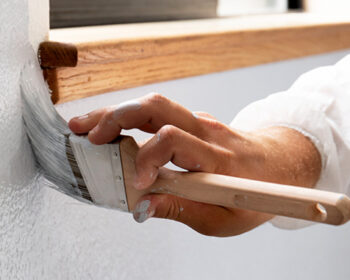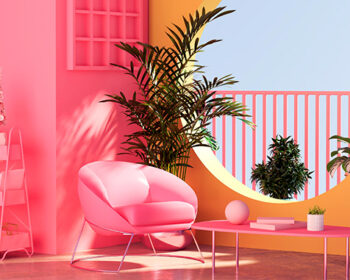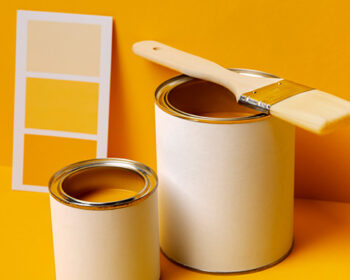
A Guide to Bathroom Wall Options: Which Material Is Right for You?
The walls in the bathroom are different from the walls in other rooms in the house. Every sort of wall covering can be used in living rooms, bedrooms, hallways, and other entirely dry places. Even in generally dry kitchens, practically any form of wall covering can be used. This is made feasible by the protection provided by backsplashes in kitchens. But in bathrooms, water comes from all directions. Bathroom walls suffer greatly from moisture, both from direct tub and shower overspray and from moisture-rich air. While bathroom vent fans certainly help, moisture problems can occur even in bathrooms with good ventilation.
Semi-Gloss Bathroom or Regular Interior Paint
Bathroom paint is regular interior paint that has properties that make it better suited for bathrooms. The major thing to avoid with standard interior paint is choosing a flat or matte surface paint since those surfaces will retain water in the paint’s pores. Using surfaces with a semi-gloss or even high gloss sheen is a traditional method for avoiding this since water beads up on these surfaces. But, you can achieve those desired flatter sheens in the bathroom with quality paints that contain chemicals that destroy mould.
Based on our experience as house painter in Melbourne, painting your bathroom walls is the most cost-effective option. Interior painting in eggshell or semi-gloss is affordable. Using wallpaper, tile, or other hard surfaces is significantly more expensive than using dedicated bathroom paint, which can cost up to twice as much as standard acrylic-latex interior paint.
Vinyl Wallpaper
Functionality-wise, vinyl-coated wallpaper is among the better choices for bathroom walls (all-paper coverings will degrade in the moist environment). But, if 100% vinyl wallpaper makes you think of a hotel, reconsider. Vinyl wall coverings have improved and elevated. Beautiful vinyl wallpapers are available from retailers and they have covered homes that have appeared in shelter and design magazines.
Just make sure that the wall surface you currently have can support peelable vinyl wallpaper. Peelable vinyl wallpaper won’t stick to matte, flat, or rough surfaces since it is less sticky than permanent wallpaper. Moreover, vinyl wall coverings are better for indirect ambient dampness. Hence, combine with a surface that covers the lower half of the walls. However, some vinyl wall coverings may resist direct water contact, such as in a shower cubicle.
One advantage of vinyl wallpaper is that you can actually test it out before installing it. Purchase a roll or a sample, then place it in the space. Your bathroom will appear smaller if you use bold patterns. Your attention is drawn upward and the room appears taller due to verticals. Horizontals appear to make it wider.
Ceramic or Glass Tile
For bathroom walls, ceramic tile is a traditional option. With tile, moisture will never be an issue as long as it is applied correctly. Even areas with standing water, such the interiors of bathtubs and swimming pools, have been covered in tile since the time of the ancient Romans.
Your primary concern is design. Every tile has grout, which means lines. The appearance of the bathroom can be improved or diminished by the patterns created by lines. A space might feel cluttered, heavy, antiseptic, and even sad if it has too many tiles. The wall being partially tiled is a good compromise. Ceramic tile used as wainscot often ends at a specific point on the wall; this point is typically 36 inches.
Tileboard
At first glance, tileboard appears to be ceramic tile. Tileboard is available in big format panels that allow you to quickly and easily install 32 square feet of wall covering that roughly resembles tile.
Improved tileboard resembles ceramic tile more closely and has a coated wear surface that deters moisture. Due to its budget-friendly appearance, tileboard is best used in guest bathrooms or basement bathrooms. It is also inexpensive and simple to install. Tileboard is a cheap substance that addresses wall issues quickly but doesn’t significantly increase the value of your house over time.
Tileboard has the drawback of swelling very quickly and failing to shrink back to its previous size if water gets behind it. Maintaining bathroom-grade silicone caulk around all seams and edges is one approach to solve this issue.
Beadboard
Beadboard only covers half of the wall. But when it comes to moisture issues, the lower portion is the most crucial. It is possible to paint beadboard with glossy or semi-gloss paint, which effectively shields the lowest portions of the walls against dampness.
Get beadboard panels that are eight feet long and four feet high to make installation simpler. These long boards go down fast with finish nails and construction adhesive when installed longitudinally. Choose individual beadboard boards for a more elegant and authentically old-fashioned appearance.
The vintage appearance of your bathroom’s beadboard can either be an asset or a liability. Beadboard blends seamlessly into bathrooms with a traditional design. Beadboard is awkward and out of place in contemporary bathrooms.





